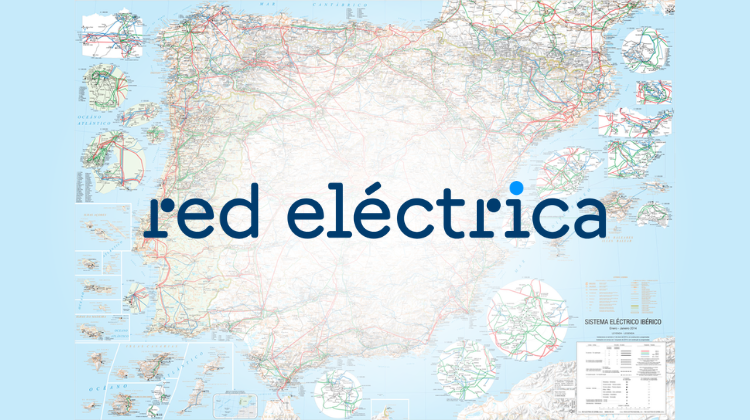In the first five months of 2025, Red Eléctrica de España (REE) received 28 administrative and construction permits from MITECO and regional governments to reinforce grid infrastructure. However, the pace of the past 30 days broke all records: 12 of those resolutions were issued in May, immediately following the blackout recorded at the end of April.
This has sparked debate among analysts, who question whether this wave of resolutions reflects a reactive dynamic by the Government in response to the energy crisis.
May’s resolutions authorise works at strategically critical substations, such as the new position at Torrejón de Velasco (Madrid), as well as expansions in Antas (Almería), Baza and Huéneja (Granada), Pesoz (Asturias), Godelleta and Montesa (Valencia), Virtus (Burgos), Beariz (Ourense), Montearenas (León) and Olmedo (Valladolid). Additionally, the third section of the compact line in Barcelona, between Olesa, Vallirana and Begues, was approved.
Most of these interventions involve the incorporation of new switchgear, reactors or transformers at 400 kV substations, aimed at reinforcing critical nodes and providing greater operational flexibility.
Other works, such as the one in Beariz (Ourense), respond to the need for entirely new infrastructure, including underground lines and transformer stations.
“If these decisions have anything to do with the blackout, someone should be held accountable,” states Abelardo Reinoso, Energy Analyst and Partner at Malaika Net Energy.
Speaking to Strategic Energy Europe, Reinoso suggests that this situation might be seen as “decisions that give the impression of action, but in reality, these should have been taken much earlier.”
The contrast with 2024: slower, less concentrated
Throughout 2024, Red Eléctrica received 78 resolutions, averaging 6.5 per month, with no month matching the spike recorded in May this year. In the first five months of 2024, only five authorisations were granted, reinforcing the notion of a post-crisis acceleration in 2025.
Last year’s resolutions were more evenly distributed, covering projects such as:
- Rubí and Begues substations (Barcelona)
- La Ribina / Antas 400 kV substation (Almería)
- Transformers in Abanilla (Murcia) and Arañuelo (Cáceres)
- Interconnection line at the Bay of Biscay (Basque Country)
- New positions at substations in Don Álvaro, Zarzón, Anchuelo, Requena, Escatrón, Solórzano and Santa Engracia, among many others.
Although significant, 2024’s approvals followed a more gradual pace and were disconnected from critical system events, unlike the block of 12 resolutions issued within a single month this year.
Infrastructure development falls behind system needs
Spain’s electricity transmission infrastructure is facing structural challenges amid the sustained rise in demand, driven by electrification, data centre growth, renewable hydrogen deployment, and the mass integration of renewables and storage.
According to REE, between January and April 2025, demand grew 1.2% year-on-year, with temperature-adjusted growth at 0.5%, confirming a gradual recovery trend after years of stagnation.
Simultaneously, the PNIEC forecasts demand to reach 355 TWh by 2030, a 34% increase compared to 2019. However, sector experts argue that even reaching 280 TWh would be a significant achievement.
This growth puts pressure on a network that, as Reinoso warns, is responding far too slowly. Projects approved today—whether substations or transmission lines—will not be operational for five to seven years, jeopardising the system’s ability to absorb expected demand growth on time.
Adding to this is a regulatory bottleneck: while over 28 GW of renewables have construction permits, only 5 to 7 GW of the 22 GW of requested storage capacity are expected to connect to the grid by 2030.
Given that a substation can take five years to build and a line at least seven, Reinoso argues that there won’t be enough time to deliver REE’s planned infrastructure, and this is “yet another example of the structural disorder affecting the planning of Spain’s transmission network.”
As a result, without deep reform in planning and execution, the grid will arrive late to the electric future the country has already begun to demand.
Strategic vision and regulatory flexibility
Reinoso believes the current planning model, based on five-year cycles, is insufficient for such a dynamic environment.
“Planning is done without real alignment with the pace of the electricity market, industrial projects or storage,” he argues. “We need to decide what kind of country we want to be: renewable, digital, electrified. And from there, design a grid to support that path.”
Another key reform is enabling developers to co-finance their grid connections, as is already possible in the distribution network.
“Many would be willing to invest in their own connections if regulations allowed it. Today, the transmission network does not,” he explains.
Ultimately, the difference between 2024 and 2025 is not only quantitative but qualitative: from a steady, structured rollout to a reactive surge following a crisis—without any guarantee that it will translate into timely, effective solutions.
“The answer is not to authorise everything at once. It’s to design a system that doesn’t depend on shocks to move forward,” Reinoso concludes.






























